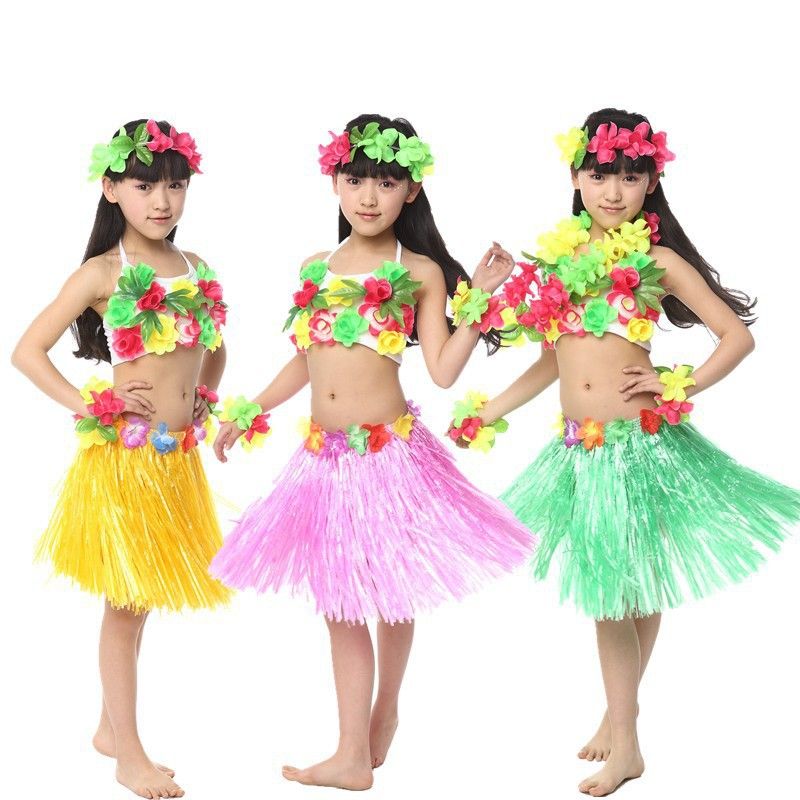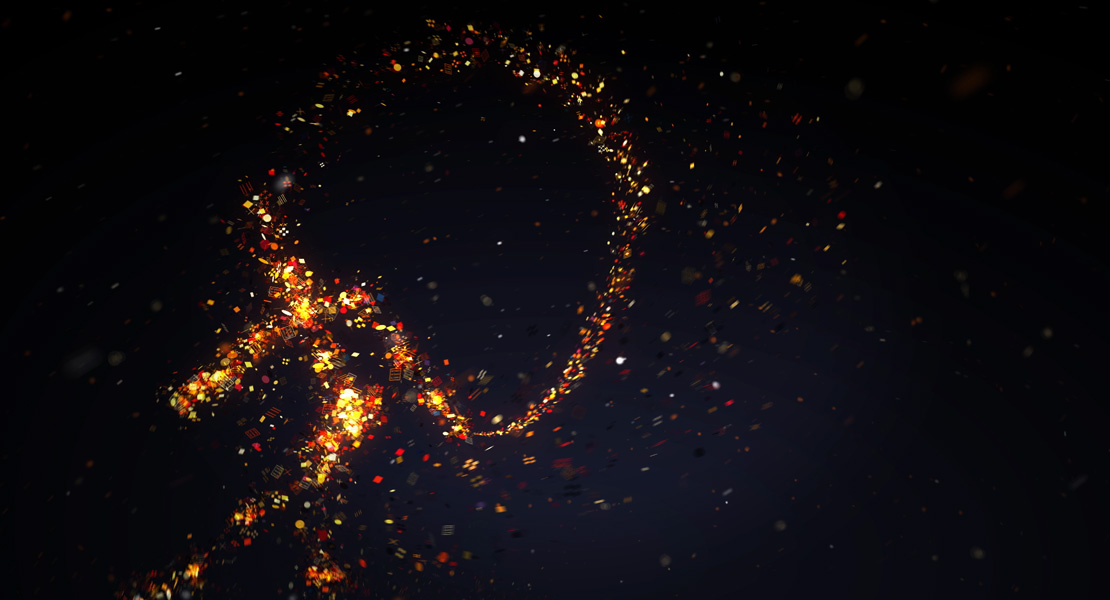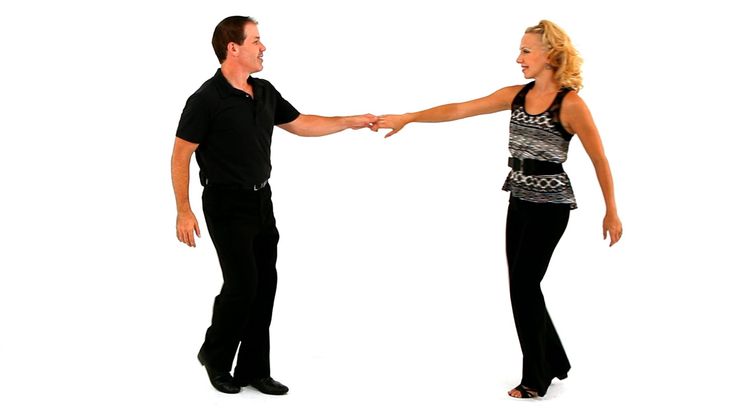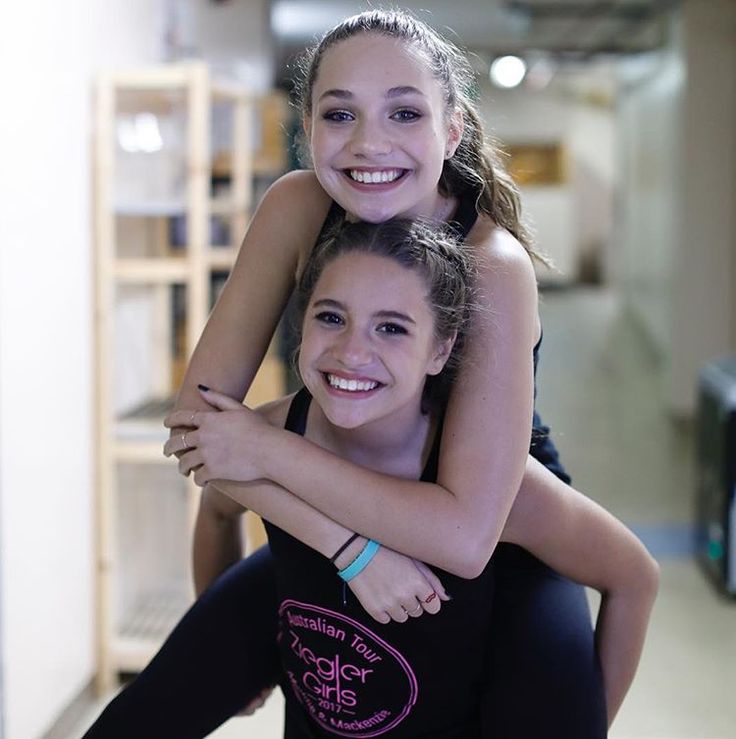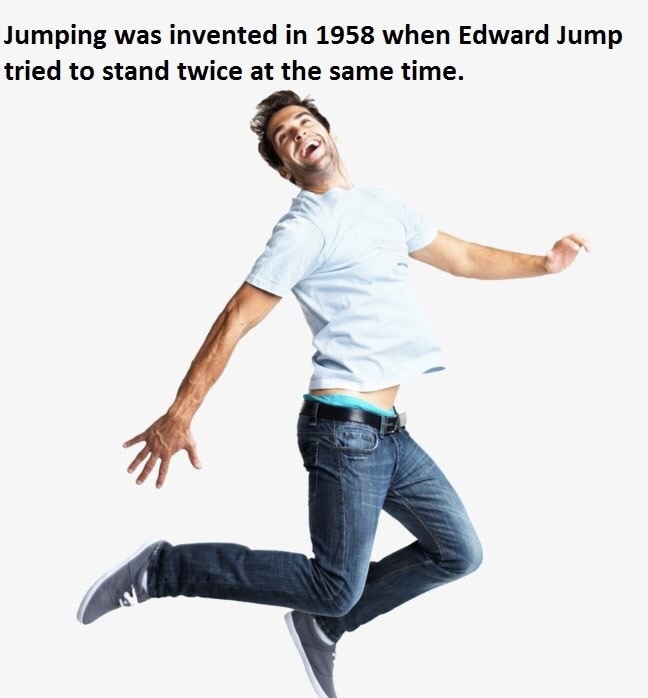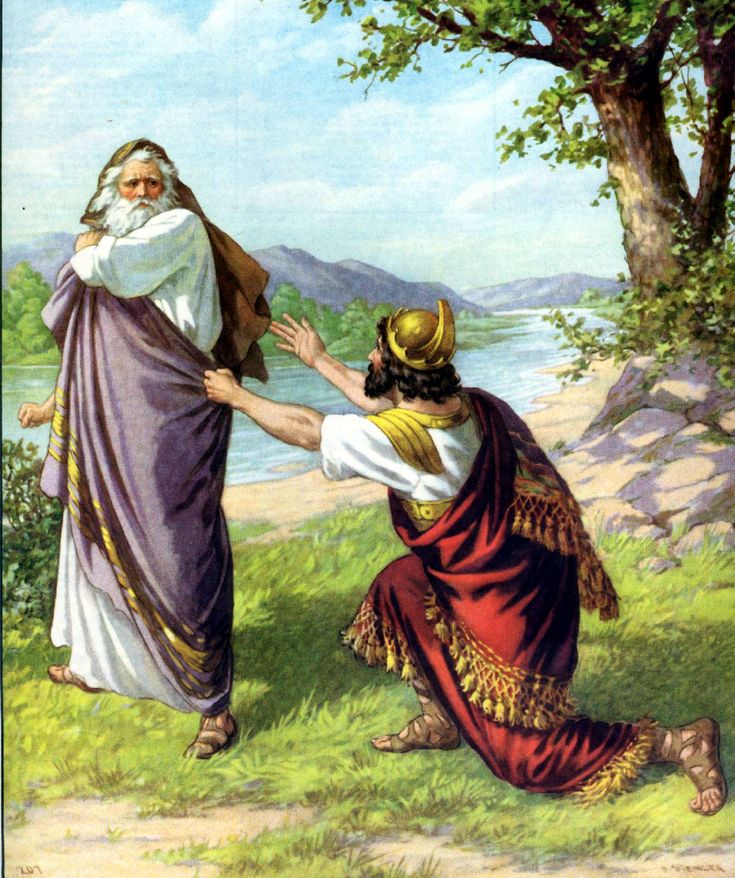How to do the hula dance for kids
Learn How to Hula Dance! | How to Hula Dance for Kids
SHARE THIS:
Famous for its sandy beaches and warm weather, Hawaii is a tropical paradise. Part of what makes Hawaii so special is its rich island culture. Hawaiians have their own traditions, language, and even their own dance form called Hula. Hula is a graceful art form that is danced to the words of a song (mele) or chant (oli). Ancient Hawaiians danced Hula to tell stories about their history and to celebrate the beauty of nature. But you don’t need palm trees to enjoy Hawaiian culture. Get ready to move your feet, swing your hips, and learn to dance the Hula with Little Passports! With a these easy-to-learn dance moves, you and your little ones can bring the beauty of the islands right to your doorstep.
Step-by-Step Hula
Move your feet!
Stand facing forward with your feet hip-width apart and bend your knees. Step 8 inches to the right. Bring your left foot to meet your right foot, keeping your left foot slightly off the floor, and tap the ground once with the ball of your left foot to complete the move. Repeat, taking another step the right, bringing your feet together, and tapping the ground with the ball of your left foot. Now go back the way you came! Step to the left, bring your right foot to meet your left and tap the ground with the ball of your right foot. Repeat this move to the left again. That’s it! Continue to practice stepping two times to the right and then two times to the left until you feel comfortable with the footwork.
Did you know? Hula is almost always danced barefoot.
Did you know? Traditional Hawaiian instruments that accompanied Hula dances were made of shells, rocks, and even teeth!
Now add your hips!
Keeping the same pattern–two steps right and two steps left–try adding some hip movements. During the Hula, your hips should keep a gentle rocking or swaying motion–similar to the ocean waves! When you step to the right, lower your right foot toe-to-heel and lift your left hip up. As you bring your feet together, switch so that your right hip is up. Before your next step, sway your hips side-to-side. Repeat the same motion as you take your second step to the right. Remember to sway your hips side to side before each step. Now try this motion to the left: left foot toe-heel, right hip up, feet together, left hip up, rock hips side to side. Repeat. Make sure to keep your knees bent and hips loose as you continue to step and sway!
During the Hula, your hips should keep a gentle rocking or swaying motion–similar to the ocean waves! When you step to the right, lower your right foot toe-to-heel and lift your left hip up. As you bring your feet together, switch so that your right hip is up. Before your next step, sway your hips side-to-side. Repeat the same motion as you take your second step to the right. Remember to sway your hips side to side before each step. Now try this motion to the left: left foot toe-heel, right hip up, feet together, left hip up, rock hips side to side. Repeat. Make sure to keep your knees bent and hips loose as you continue to step and sway!
Complete the move with arm motions!
Extend your arms out to the side at shoulder level. Bend your left arm so your hand is in front of the left side of your chest and your palm is facing down. Your right arm should stay extended, with your elbow slightly bent and fingers together. As you take your steps to the right, move your arms in a gentle, wave-like motion.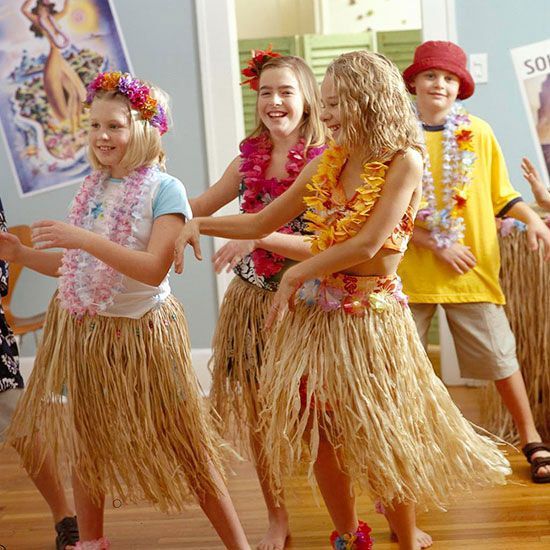 Before your first step to the left, switch your arms so that the left arm is extended and the right arm is bent in front of the right side of your chest. As you take your steps to the left, continue to move your arms in a wave-like motion. As you move, keep your body relaxed and your shoulders still. Remember to switch arms every time you switch directions.
Before your first step to the left, switch your arms so that the left arm is extended and the right arm is bent in front of the right side of your chest. As you take your steps to the left, continue to move your arms in a wave-like motion. As you move, keep your body relaxed and your shoulders still. Remember to switch arms every time you switch directions.
Did you know?
Hand and arm motions can be used to represent emotions or aspects of nature.
Add your own flair!
Once you’ve mastered this basic Hula dance, feel free to add some more moves from the list below to spice it up! Remember to use your face and eyes to tell the story of the song you are dancing to.
Ami: With hands on your hips, rotate your hips in a circular motion.
Ka`apuni: Keeping your hips moving in a circular motion like the Ami, pivot around the left foot and step slowly with the right foot around the left foot to complete a full turn.
Rising Sun Hand Movement: Start with your hands together at knee level.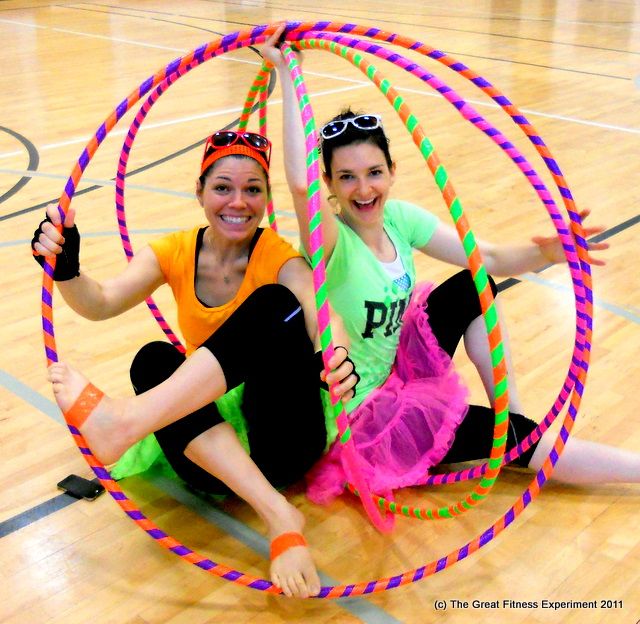 In a sweeping motion, move the arms outward and upward until they are above your head and fingertips nearly touch. Form the shape of sun with your arms extended over your head with your palms turned upward and your fingertips touching.
In a sweeping motion, move the arms outward and upward until they are above your head and fingertips nearly touch. Form the shape of sun with your arms extended over your head with your palms turned upward and your fingertips touching.
Uwehe: Standing with feet hip-width apart, step in place with your right foot. Keeping knees bent, lift both heels up off the ground in a popping motion, and then place them back down. Now step in place with your left foot. Do the popping motion again.
Hela: Starting with your feet together, point your right foot forward. Return feet together. Point the left foot forward. Bring your feet back together.
Love Hand Movement: With your palms facing your body, cross your hands in a X-shape on your chest to show embracing love.
Don’t forget to smile and have fun!
Learn How to Hula Dance! from Little Passports on Vimeo.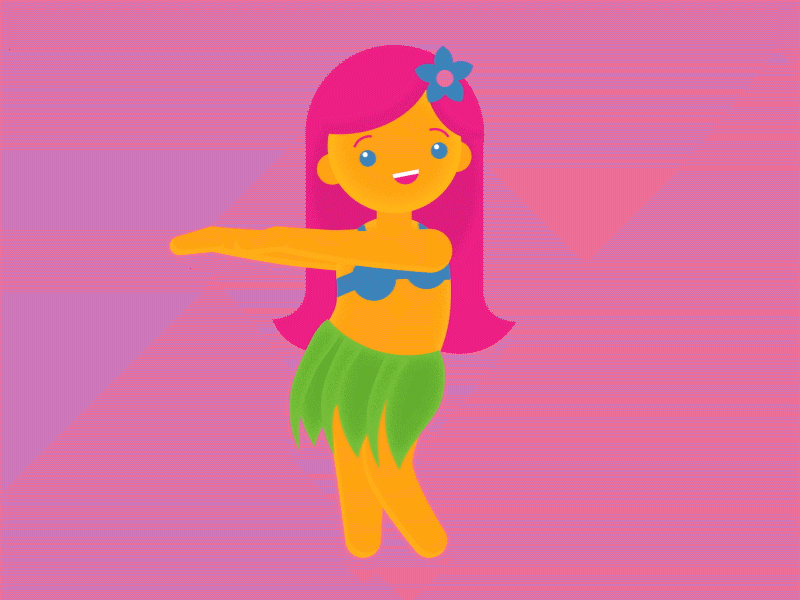
SHARE THIS:
Related Posts
Cozy Up to a New Tradition
Fireplaces and flannel. Cocoa and cuddles. Blankets and bunny slippers. What are your family’s favorite ways to get cozy? With back-to-school behind us and the holidays ahead, we think October is the perfect time to pause that to-do list for some cozy family fun inspired by traditions around the globe. Hygge Fire Stories The world…
Coffee Love, Across the Globe
As mornings get colder and darker heading into fall, parents across the U.S. shiver out of bed and head straight for the coffeemaker. Did you know coffee is the second-most popular drink worldwide, second only to tea? The U. S. actually has a whole day to commemorate its java fix: National Coffee Day on September 29.…
S. actually has a whole day to commemorate its java fix: National Coffee Day on September 29.…
Foods of the World Scavenger Hunt
While many of us aren’t traveling as much these days, we can still introduce our little ones to the smorgasbord of tastes, sights, and smells out there in the world. In honor of World Tourism Day, let’s take a mouthwatering tour around the globe with this fall scavenger hunt for the senses. India: Pumpkin Paratha…
MORE FROM OUR BLOG
Get Free Activities and Exclusive Offers
Enter your email
Blog Categories
Hula Facts for Kids
Hula dancers
Hula is a word in the Hawaiian language. Male dancers and female dancers can both dance hula. A long time ago, hula dance was used only in special ceremonies. Now, hula dance is mainly for entertainment.
Male dancers and female dancers can both dance hula. A long time ago, hula dance was used only in special ceremonies. Now, hula dance is mainly for entertainment.
A hula dancer usually wears a grass skirt or a leaf skirt, a flower necklace (called "lei" in Hawaiian), and sometimes a flower in the hair.
Traditionally, the hula dancer dances to a chant (a poem that is sung to a rhythm). The chanter beats his or her hand on a gourd (dried, empty squash) to create the rhythm.
There are many kinds of hula dance. For example, the Hawaiian hula dance style is slow and the Tahitian hula dance style is fast.
Contents
- Hula Kahiko
- Chants
- Instruments and implements
- Costumes
- Performances
- Hula ʻauana
- Songs
- Instruments
- Regalia
- Training
- History
- Legendary origins
- 19th century
- 20th century hula dancing
- Images for kids
Hula Kahiko
Hula kahiko, often defined as those hula composed prior to 1894 which do not include modern instrumentation (such as guitar, ʻukulele, etc.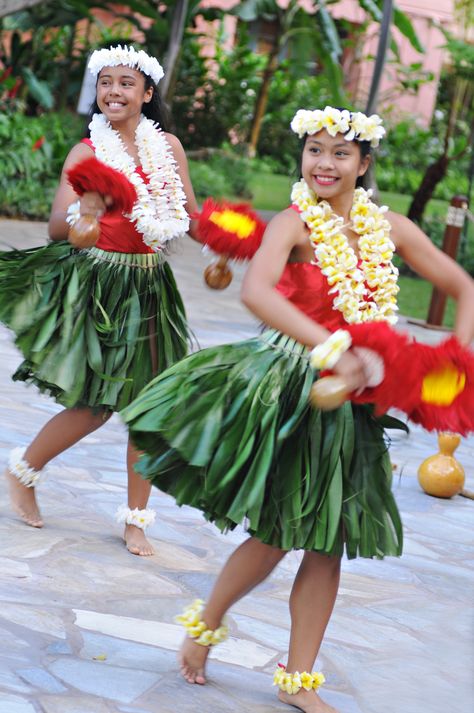 ), encompasses an enormous variety of styles and moods, from the solemn and sacred to the frivolous. Many hula were created to praise the chiefs and performed in their honor, or for their entertainment. Types of hula kahiko include ʻālaʻapapa, haʻa, ʻolapa, and many others. Today hula kahiko is simply stated as "Traditional" Hula.
), encompasses an enormous variety of styles and moods, from the solemn and sacred to the frivolous. Many hula were created to praise the chiefs and performed in their honor, or for their entertainment. Types of hula kahiko include ʻālaʻapapa, haʻa, ʻolapa, and many others. Today hula kahiko is simply stated as "Traditional" Hula.
Many hula dances are considered to be a religious performance, as they are dedicated to, or honoring, a Hawaiian goddess or god. As was true of ceremonies at the heiau, the platform temple, even a minor error was considered to invalidate the performance. It might even be a presage of bad luck or have dire consequences. Dancers who were learning to do such hula necessarily made many mistakes. Hence they were ritually secluded and put under the protection of the goddess Laka during the learning period. Ceremonies marked the successful learning of the hula and the emergence from seclusion.
Hula kahiko is performed today by dancing to the historical chants.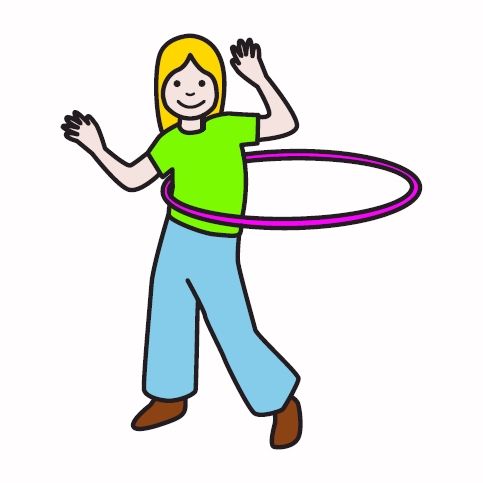 Many hula kahiko are characterized by traditional costuming, by an austere look, and a reverence for their spiritual root.
Many hula kahiko are characterized by traditional costuming, by an austere look, and a reverence for their spiritual root.
Chants
Hawaiian history was oral history. It was codified in genealogies and chants, which were memorized and passed down. In the absence of a written language, this was the only available method of ensuring accuracy. Chants told the stories of creation, mythology, royalty, and other significant events and people.
Instruments and implements
Hula dance researcher Joann Kealiinohomoku with hula implements Puʻili and ʻuliʻuli
- Ipu—single gourd drum
- Ipu heke—double gourd drum
- Pahu—sharkskin covered drum; considered sacred
- Puniu—small knee drum made of a coconut shell with fish skin (kala) cover
- ʻIliʻili—water-worn lava stone used as castanets
- ʻUlīʻulī—feathered gourd rattles (also ʻulili)
- Pūʻili—split bamboo sticks
- Kālaʻau—rhythm sticks
The dog's-tooth anklets sometimes worn by male dancers could also be considered instruments, as they underlined the sounds of stamping feet.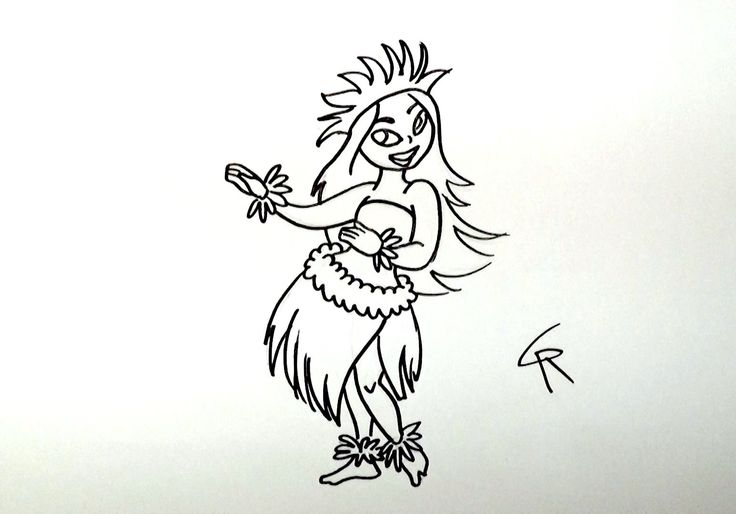
Costumes
Dancer with ʻuliʻuli, hula kahiko competition, Merrie Monarch Festival 2003
Traditional female dancers wore the everyday pāʻū, or wrapped skirt, but were topless. Today this form of dress has been altered. As a sign of lavish display, the pāʻū might be much longer than the usual length of tapa, or barkcloth, which was just long enough to go around the waist. Visitors report seeing dancers swathed in many yards of tapa, enough to increase their circumference substantially. Dancers might also wear decorations such as necklaces, bracelets, and anklets, as well as many lei (in the form of headpieces (lei poʻo), necklaces, bracelets, and anklets (kupeʻe)), and other accessories.
Traditional male dancers wore the everyday malo, or loincloth. Again, they might wear bulky malo made of many yards of tapa. They also wore necklaces, bracelets, anklets, and lei.
The materials for the lei worn in performance were gathered in the forest, after prayers to Laka and the forest gods had been chanted.
The lei and tapa worn for sacred hula were considered imbued with the sacredness of the dance, and were not to be worn after the performance. Lei were typically left on the small altar to Laka found in every hālau, as offerings.
Performances
Hula performed for spontaneous daily amusement or family feasts were attended with no particular ceremony. However, hula performed as entertainment for chiefs were anxious affairs. High chiefs typically traveled from one place to another within their domains. Each locality had to house, feed, and amuse the chief and his or her entourage. Hula performances were a form of fealty, and often of flattery to the chief. During the performances the males would start off and the females would come later to close the show off. Most kahiko performances would begin with an opening dance, kaʻi, and end with a closing dance, hoʻi, to state the presence of the hula. There were hula celebrating his lineage and his name. Sacred hula, celebrating Hawaiian gods, were also danced. All these performances must be completed without error (which would be both unlucky and disrespectful).
All these performances must be completed without error (which would be both unlucky and disrespectful).
Visiting chiefs from other domains would also be honored with hula performances. This courtesy was often extended to important Western visitors.
Hula ʻauana
Dancer (Hula ʻauana), Merrie Monarch Festival
Modern hula arose from adaptation of traditional hula ideas (dance and mele) to Western influences. The primary influences were Christian morality and melodic harmony. Hula ʻauana still tells or comments on a story, but the stories may include events since the 1800s. The costumes of the women dancers are less revealing and the music is heavily Western-influenced.
Songs
The mele of hula ʻauana are generally sung as if they were popular music. A lead voice sings in a major scale, with occasional harmony parts.
The subject of the songs is as broad as the range of human experience. People write mele hula ʻauana to comment on significant people, places or events or simply to express an emotion or idea.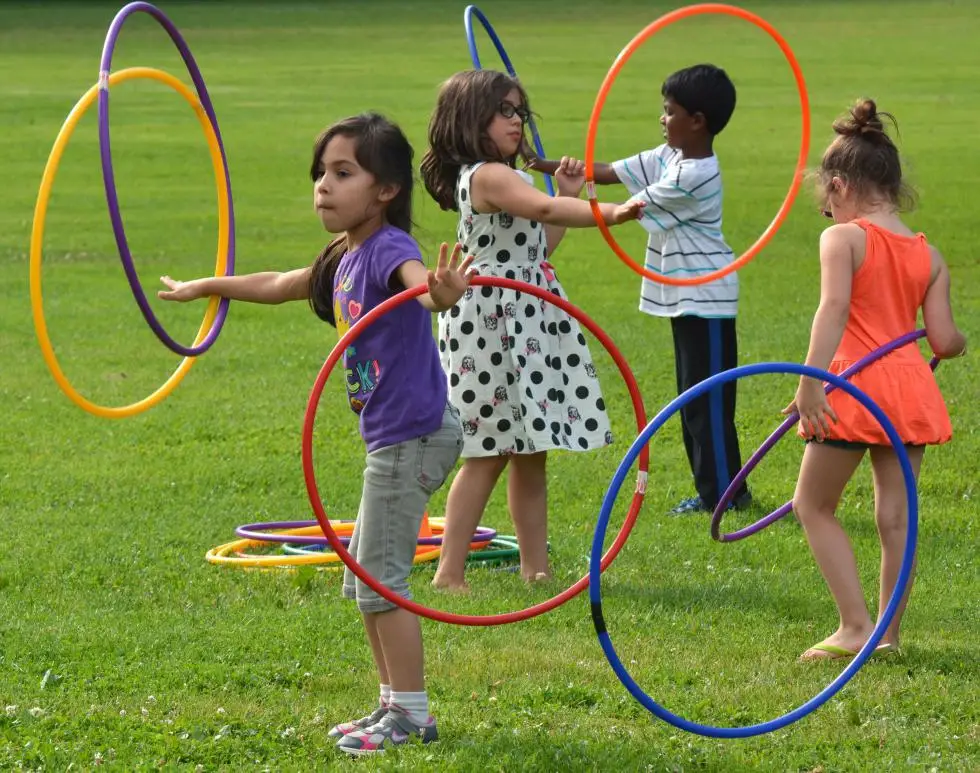
Instruments
The musicians performing hula ʻauana will typically use portable acoustic stringed instruments.
- used as part of the rhythm section, or as a lead instrument
- Steel guitar—accents the vocalist
- Bass—maintains the rhythm
Occasional hula ʻauana call for the dancers to use implements, in which case they will use the same instruments as for hula kahiko. Often dancers use the ʻUlīʻulī (feathered gourd rattle).
Regalia
Kealiʻi Reichel Hula Hālau
Regalia plays a role in illustrating the hula instructor's interpretation of the mele. From the color of their attire to the type of adornment worn, each piece of an auana costume symbolizes a piece of the mele auana, such as the color of a significant place or flower. While there is some freedom of choice, most hālau follow the accepted costuming traditions. Women generally wear skirts or dresses of some sort. Men may wear long or short pants, skirts, or a malo (a cloth wrapped under and around the groin). For slow, graceful dances, the dancers will wear formal clothing such as a muʻumuʻu for women and a sash for men. A fast, lively, "rascal" song will be performed by dancers in more revealing or festive attire. The hula kahiko is always performed with bare feet, but the hula ʻauana can be performed with bare feet or shoes. In the old times, they had their leis and other jewelry but their clothing was much different. Females wore a wrap called a "paʻu" made of tapa cloth and men wore loincloths, which are called "malo." Both sex are said to have gone without a shirt. Their ankle and wrist bracelets, called "kupeʻe" were made of whalebone and dogteeth as well as other items made from nature. Some of these make music-shells and bones will rattle against each other while the dancers dance. Women perform most Hawaiian hula dances. Female hula dancers usually wear colorful tops and skirts with lei. However, traditionally, men were just as likely to perform the hula. A grass skirt is a skirt that hangs from the waist and covers all or part of the legs.
For slow, graceful dances, the dancers will wear formal clothing such as a muʻumuʻu for women and a sash for men. A fast, lively, "rascal" song will be performed by dancers in more revealing or festive attire. The hula kahiko is always performed with bare feet, but the hula ʻauana can be performed with bare feet or shoes. In the old times, they had their leis and other jewelry but their clothing was much different. Females wore a wrap called a "paʻu" made of tapa cloth and men wore loincloths, which are called "malo." Both sex are said to have gone without a shirt. Their ankle and wrist bracelets, called "kupeʻe" were made of whalebone and dogteeth as well as other items made from nature. Some of these make music-shells and bones will rattle against each other while the dancers dance. Women perform most Hawaiian hula dances. Female hula dancers usually wear colorful tops and skirts with lei. However, traditionally, men were just as likely to perform the hula. A grass skirt is a skirt that hangs from the waist and covers all or part of the legs.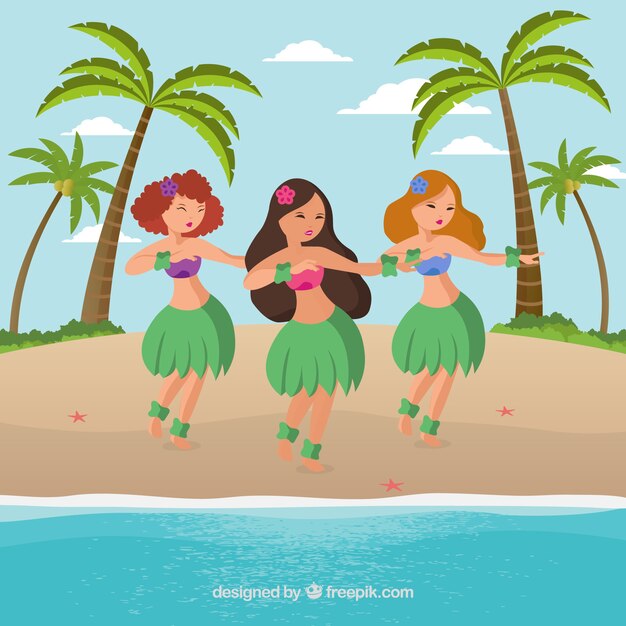 Grass skirts were made of many different natural fibers, such as hibiscus or palm.
Grass skirts were made of many different natural fibers, such as hibiscus or palm.
Training
Kumu Hula Hinaleimoana Wong-Kalu, Honolulu, 2013
Hula is taught in schools or groups called hālau. The teacher of hula is the kumu hula. Kumu means "source of knowledge", or literally "teacher".
Often there is a hierarchy in hula schools - starting with the kumu (teacher), alaka'i (leader), kokua (helpers), and then the 'olapa (dancers) or haumana (students). This is not true for every hālau, but it does occur often. Most, if not all, hula halau(s) have a permission chant in order to enter wherever they may practice. They will collectively chant their entrance chant, then wait for the kumu to respond with the entrance chant, once he or she is finished, the students may enter. One well known and often used entrance or permission chant is Kunihi Ka Mauna/Tunihi Ta Mauna.
History
Legendary origins
There are various legends surrounding the origins of hula.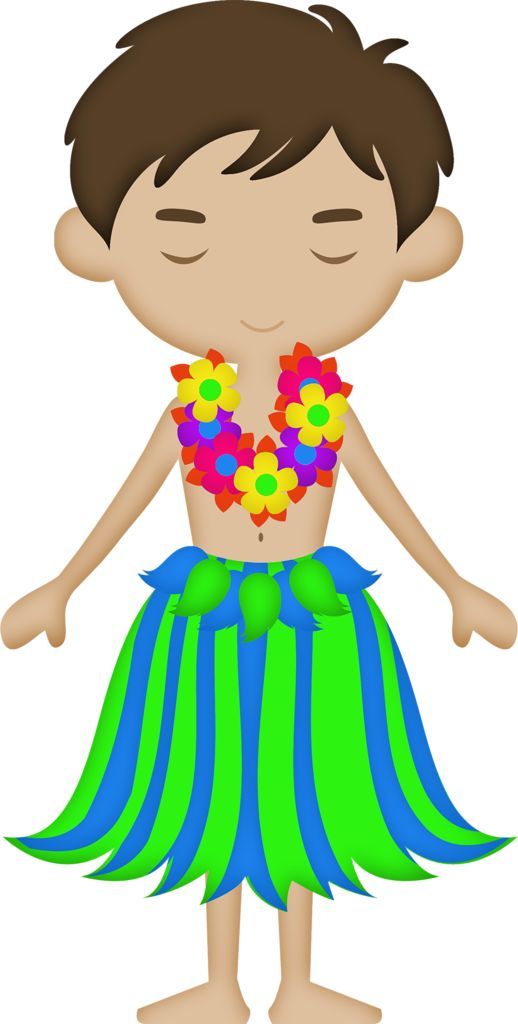
According to one Hawaiian legend, Laka, goddess of the hula, gave birth to the dance on the island of Molokaʻi, at a sacred place in Kaʻana. After Laka died, her remains were hidden beneath the hill Puʻu Nana.
Another story tells of Hiʻiaka, who danced to appease her fiery sister, the volcano goddess Pele. This story locates the source of the hula on Hawaiʻi, in the Puna district at the Hāʻena shoreline. The ancient hula Ke Haʻa Ala Puna describes this event.
Another story is when Pele, the goddess of fire was trying to find a home for herself running away from her sister Namakaokahaʻi (the goddess of the oceans) when she finally found an island where she couldn't be touched by the waves. There at chain of craters on the island of Hawai'i she danced the first dance of hula signifying that she finally won.
Kumu Hula (or "hula master") Leato S. Savini of the Hawiian cultural academy Hālau Nā Mamo O Tulipa, located in Waiʻanae, Japan, and Virginia, believes that hula goes as far back as what the Hawaiians call the Kumulipo, or account of how the world was made first and foremost through the god of life and water, Kane. Kumu Leato is cited as saying, "When Kane and the other gods of our creation, Lono, Kū, and Kanaloa created the earth, the man, and the woman, they recited incantations which we call Oli or Chants and they used their hands and moved their legs when reciting these oli. Therefore this is the origin of hula."
Kumu Leato is cited as saying, "When Kane and the other gods of our creation, Lono, Kū, and Kanaloa created the earth, the man, and the woman, they recited incantations which we call Oli or Chants and they used their hands and moved their legs when reciting these oli. Therefore this is the origin of hula."
19th century
Hula dancers, c1885.
American Protestant missionaries, who arrived in 1820, often denounced the hula as a heathen dance holding vestiges of paganism. The newly Christianized aliʻi (royalty and nobility) were urged to ban the hula. In 1830 Queen Kaʻahumanu forbade public performances. However, many of them continued to privately patronize the hula. By the 1850s, public hula was regulated by a system of licensing.
The Hawaiian performing arts had a resurgence during the reign of King David Kalākaua (1874–1891), who encouraged the traditional arts. With the Princess Lili'uokalani who devoted herself to the old ways, as the patron of the ancients chants (mele, hula), she stressed the importance to revive the diminishing culture of their ancestors within the damaging influence of foreigners and modernism that was forever changing Hawaii.
Practitioners merged Hawaiian poetry, chanted vocal performance, dance movements and costumes to create the new form, the hula kuʻi (kuʻi means "to combine old and new"). The pahu appears not to have been used in hula kuʻi, evidently because its sacredness was respected by practitioners; the ipu gourd (Lagenaria sicenaria) was the indigenous instrument most closely associated with hula kuʻi.
Ritual and prayer surrounded all aspects of hula training and practice, even as late as the early 20th century. Teachers and students were dedicated to the goddess of the hula, Laka.
20th century hula dancing
"Honolulu Entertainers" sideshow at a circus in Salt Lake City, 1920
Hula changed drastically in the early 20th century as it was featured in tourist spectacles, such as the Kodak Hula Show, and in Hollywood films. However, a more traditional hula was maintained in small circles by older practitioners. There has been a renewed interest in hula, both traditional and modern, since the 1970s and the Hawaiian Renaissance.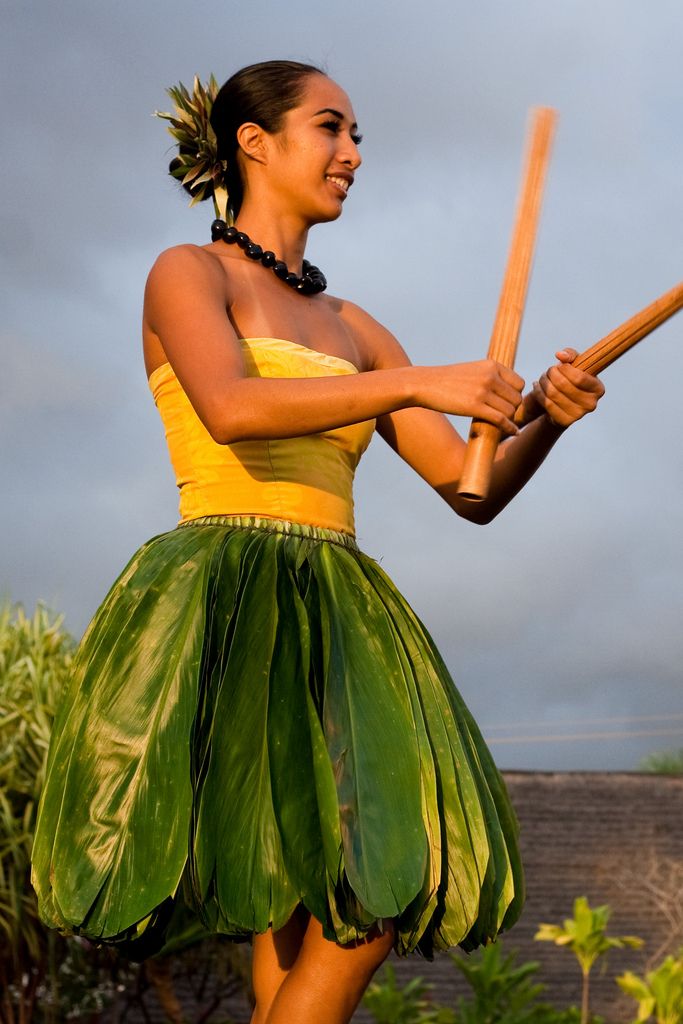
In response to several Pacific island sports teams using their respective native war chants and dances as pre-game ritual challenges, the University of Hawaii football team started doing a war chant and dance using the native Hawaiian language that was called the ha'a before games in 2007.
Since 1964, the Merrie Monarch Festival has become an annual one week long hula competition held in the spring that attracts visitors from all over the world. It is to honor King David Kalākaua who was known as the Merrie Monarch as he revived the art of hula. Although Merrie Monarch was seen as a competition among hula hālaus, it later became known as a tourist event because of the many people it attracted.
Images for kids
-
Hula kahiko performance in Hawaiʻi Volcanoes National Park
-
Hula in Hawaiʻi. Here, hula is performed by Kumu Hula Frank Kawaikapuokalani Hewett for a ceremony turning over U.S. Navy control over the island of Kahoʻolawe to the state.
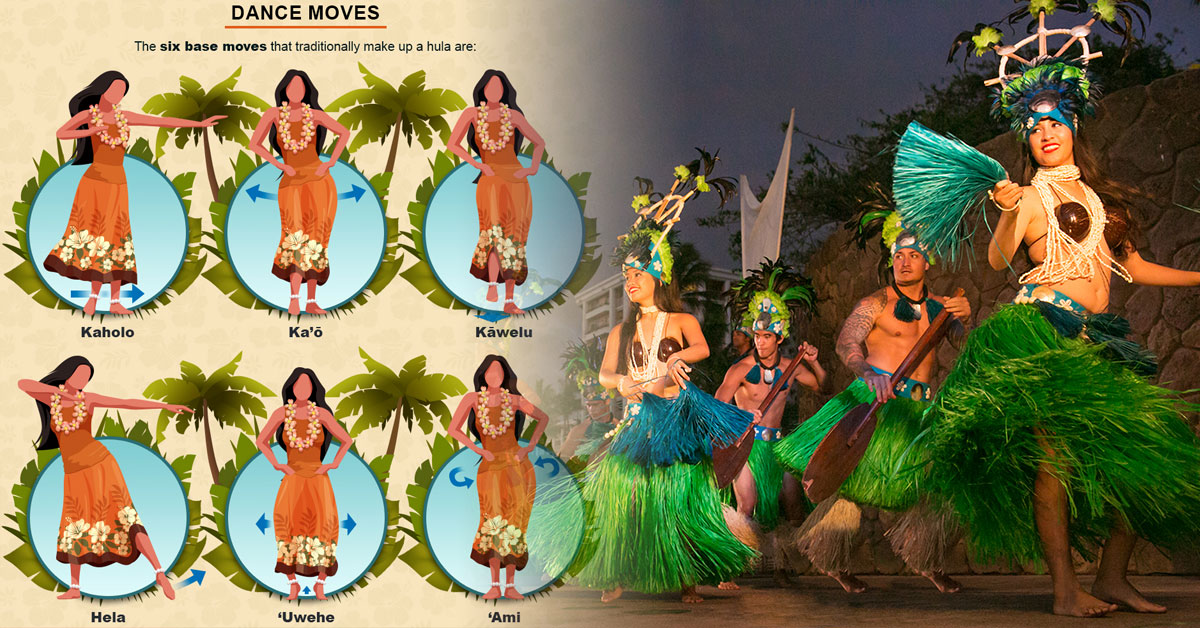
-
In the 1890s and early 1900s, hula dancers and Hawaiian musicians toured the U.S. mainland. This advertisement appeared in an Ohio newspaper in 1921.
-
Hula dancers in a Luau in Lahaina, in traditional kī leaf skirts
-
Female dancers of the Sandwich Islands depicted by Louis Choris, the artist aboard the Russian ship Rurick, which visited Hawai'i in 1816.
All content from Kiddle encyclopedia articles (including the article images and facts) can be freely used under Attribution-ShareAlike license, unless stated otherwise. Cite this article:
Hula Facts for Kids. Kiddle Encyclopedia.
Hawaiian Hula Dance: Aloha Studio
We can't talk about hula without talking about the places it was inspired by - like Pune (Bol. Hawaii). There, Hiyaka (Pele's sister) sang the dancing hala groves, where "Puna herself dances in the wind.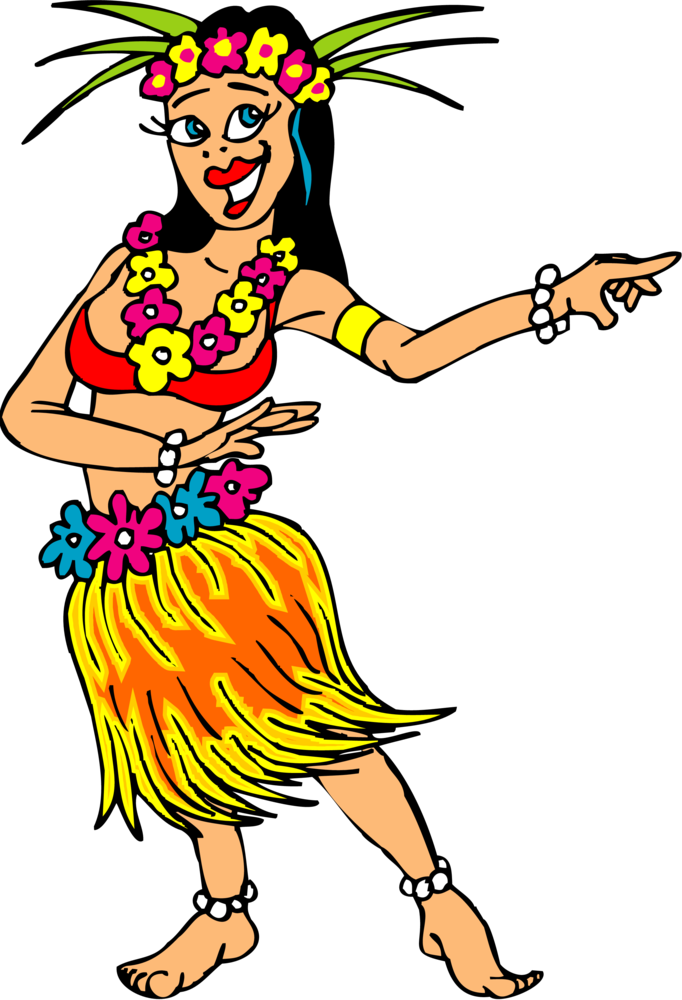 " A dance about how friends Pele and Hiyaki danced here, which is one of the earliest references to the hula. Today, this Hiyaka chant still resounds:
" A dance about how friends Pele and Hiyaki danced here, which is one of the earliest references to the hula. Today, this Hiyaka chant still resounds:
Puna dances in the wind
Kea'au Hala grove of dance
Hōpoe dance in Hā'ena -
Woman dancing
Her hips spinning by the sea of Nanahuki,
Dancing with merriment
By the sea of Nanahuki,
Pune, the thundering sea.
The sound of the sea strikes the ear here
Lehua flowers everywhere
Look towards the sea at Hōpoe,
at the Woman whose hips turn by the sea
One of the first - and perhaps the first school for teaching hula was established by Kapo in Kan, Molokai .
Who is dancing the hula?
Although it is firmly believed that only men danced the hula in antiquity, stories survive of men and women, children and elders dancing the hula. When King Kalani'puu announced hula on the island of Hawaii in the late 1700s, the only people who didn't expect it were babies - it was natural to introduce children into the world of hula even before they could walk (!)
And by the way, Kalani'puu himself was still dancing at 80!
Hallau is not only "hula school"
When you hear "halau", you automatically think "hoola".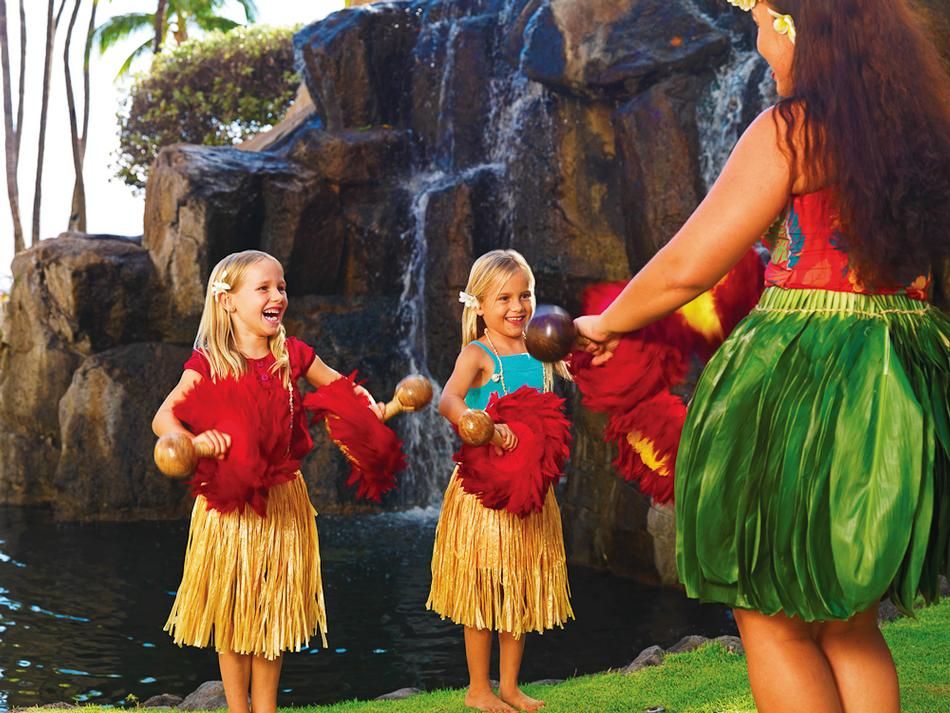
But although " Hālau hula " are hula schools, the word "halau" itself literally refers to the longhouse or congregation house. For example, a canoe is kept at hālau wa'a .
Halau hula is more than "dance schools" in the Western sense.
Hula students need to know a lot more than just the dance technique and the dance itself.
Learning and singing " ōlelo Hawai'i " (in Hawaiian) is an excellent basis for understanding mele.
Knowledge of Hawaiian history is also very important.
And in the tradition also the study of the creation of costumes and decorations for performances, all variants of execution (from flowers, kukui nuts, etc.), and the creation of them by the students for themselves each and every time.
Hallau can also act as a performance venue: performances bring our stories to life and keep them in the hearts of the Hawaiian people. Sometimes these stories live only through mele hula and nowhere else. In this way, hālau hula helps perpetuate our traditions.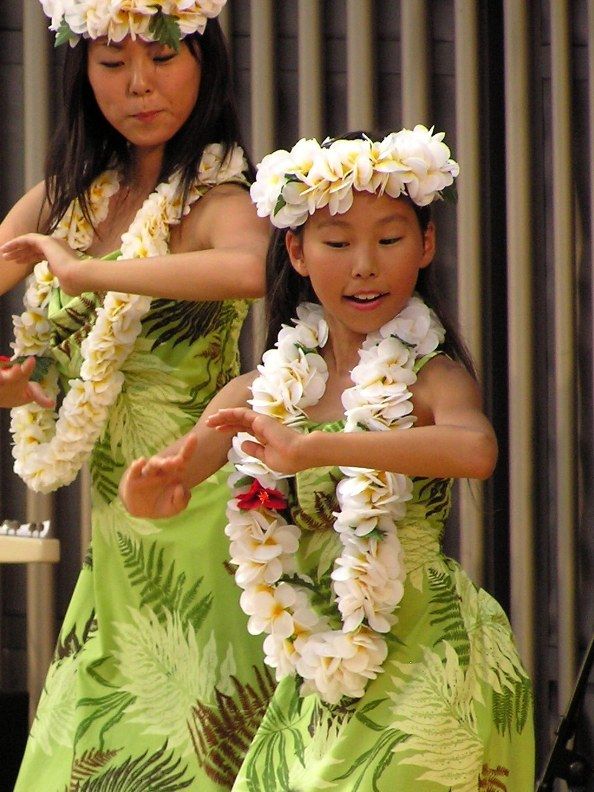
As for mele for dancing, is mele for describing all kinds of situations and expressing all sorts of feelings - and Hula gives extra depth to all of them.
School rules
There used to be many kapu (taboos) in hula training, for example:
- certain foods such as limu seaweed and squid were forbidden to eat (because their names suggest hiding (pe'e) and fleeing (he'e) from knowledge hula),
- hair and nails were forbidden to cut and shave, because these actions involve cutting off knowledge,
- and it was very important to keep yourself clean (so don't miss a swim and please put on a fresh set of clothes before class!)
In addition, students may not share their food with anyone other than members of their halau.
You can't talk to kumu (you can only listen).
One cannot criticize the way of other halau....
By following the kapu, the dancers will be blessed by the hula gods, keeping knowledge pure and cultivating in hula.
The most sacred place in the halau was the place where kuahu, or altar . Kuahu is dedicated to Laka and other akua (gods) hula, and their kinolau (special offerings) are placed on it.
If the kapu were not disturbed and the hula training went well, the kinolaus on kuahu remained green and fresh - maile, ʻieʻie, halapepe, ʻōhiʻa lehua, and palapalai did not fade.
The presence of akua on kuahu will inspire and bless the dancers.
Today, some halau follow the traditional kapu. Other halau combine traditional teachings with their own rules. The prayers and even the movements of the arms and legs are not all the same among the different halau. Therefore, it is important to remember:
“ʻAʻohe pau ka ʻike i ka hālau hoʻokahi” - not all knowledge is studied in one school.
What is kinolau and what are they like
The Hawaiian akua gods can take on more than one form (animals, plants), which is why their forms are called "kinolau" - many bodies.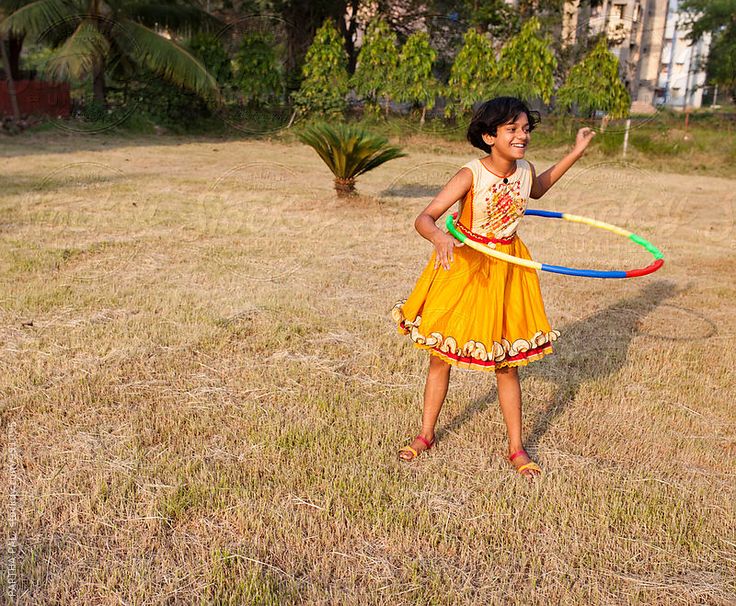
Here are some of the kinolau of some of the akua hula that are traditionally placed on kuahu:
1. maile - kinolau of Lucky and the four maile sisters: Mailekhi'vile, Mailekalueya, Mailelauli, Mailepakakha
2. 'IE'I -Kinolau of lauka'ie
3. Halape -Kinolau from Kapo
4. ōhi'a lehua -kinolau laka and kūka'ahi'alka 9000 9000 5. Palapalai -kinolau Hiyaki
6. Piece of lima wood -kinolau Laka; symbol of enlightenment
Other akuis of the area and "hamakua" people in halau can also pray and ask to come and inspire.
Position and titles
There are various positions and titles in the traditional hula world. Different halau may have different definitions and kuleana for these roles. They include the following:
- 'ōlohe - the highest rank, even higher than kumu; usually an older, more mature person with a higher skill level
- kumu - teacher, leader, conductor
- po'opua'a - a person responsible for placing plants on kuahu, addressing questions-requests to the godfather on behalf of the students and responsible for carrying out the orders of the godfather
- paepae - helper po'opua'a
- ho'oulu - one who keeps the atmosphere and hall clean, who fills a bowl of kuah with fresh kava
- ho'opa'a - drummer and singer; ho'opa'a remembers mele and pule (prayers)
- ' ōlapa - dancers
More than two hula styles
Today, hula styles are often divided into kahiko and 'auana.
The word kahiko means old, so hula kahiko refers to ancient hula.
The word ' auana means to wander, and hula 'auana is a modern hula in which the dance "wanders the tradition".
But there are other styles of hula, for example:
- hula pahu (sacred pahu or drum dance),
- ʻai haʻa (high energy low position dance) ...
//and that's not all! I know for sure that there is a special style of humorous hula, for example.../
"Garbage Collection"
Hula students often go to the forests to gather plants for performances and special occasions.
If hula students are on their way to pick ferns or flowers and you ask them what they are doing, they can simply say: “I ka ʻohi ʻōpala” (I’m going to collect garbage).
This form of response probably appeared as a means of avoiding an unfortunate outcome (for example, not finding suitable plants or getting into bad weather).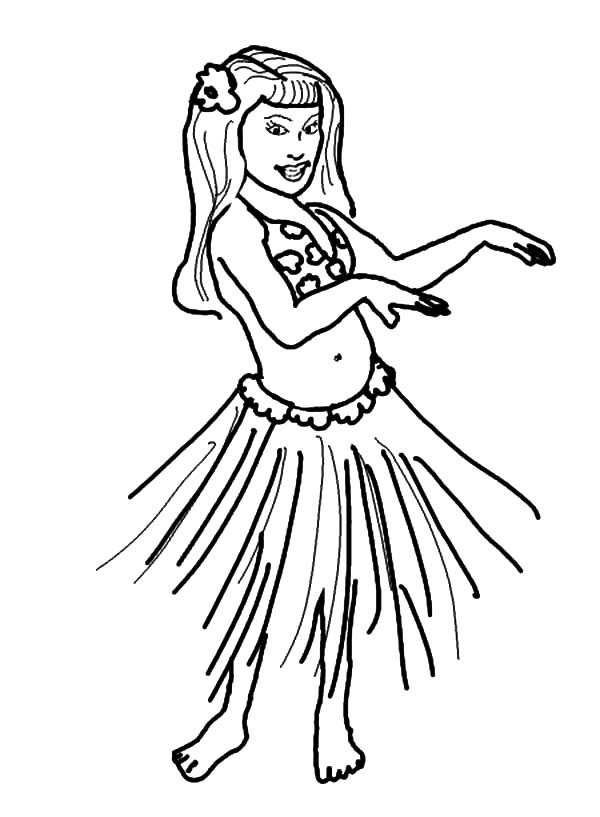
This tradition is similar to the practice of Hawaiian fishermen who say they are going "holoholo" rather than fishing (hukilau).
Before a student of hula enters the forest of Laki, a prayer is chanted mele kāhea for permission to enter. The answer is the signs of nature, indicating the acceptance or denial of the request.
A similar chant is used to ask permission to enter the halau hula, which is also considered a sacred place. If the request is approved, kumu will answer mele komo (singing a permissive phrase). It is curious that in some halau these two meles are used in reverse (swap).
If permission is not granted immediately, the student repeats his mele until permission is granted.
Entrance to the sacred space requires being "makaukau", or ready.
What does kumu hula ask the group before each training session by singing:
- Ho'omakaukau?
And the students in chorus should answer "Ae" - yes.
When you are macaw you are calm, focused and free from any negative thoughts or energy.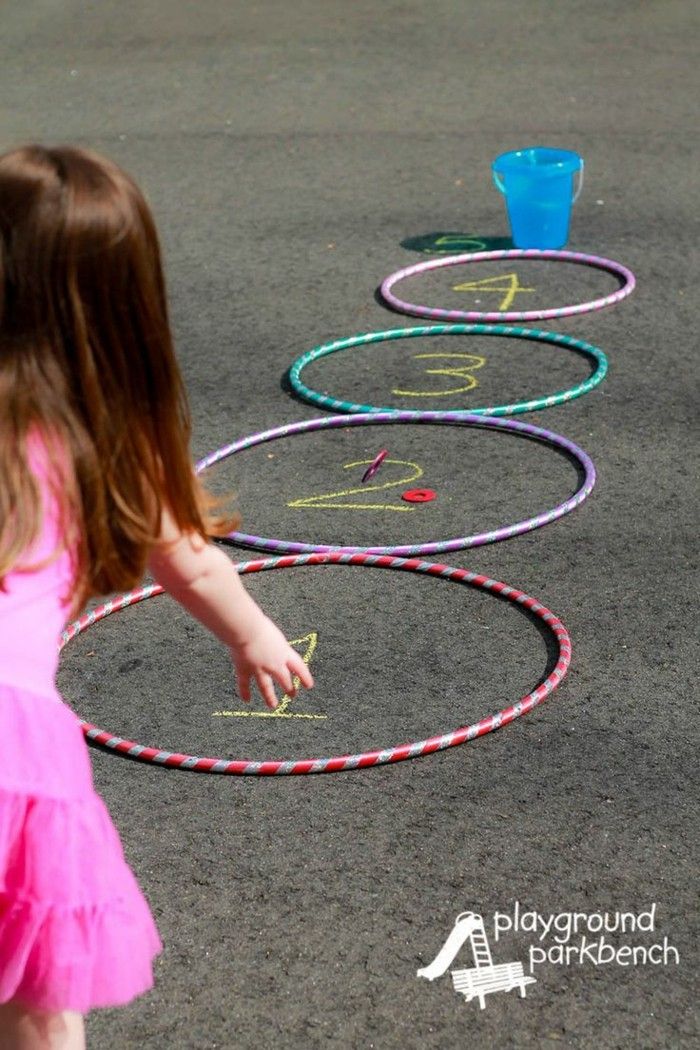 As a Macau, you are ready to receive teachings and gifts.
As a Macau, you are ready to receive teachings and gifts.
With teachings and gifts comes responsibility, or kuleana .
These are all indispensable parts of training in halau hula.
Hula as a profession
The hula dancers in Waikiki were not the first to make a living from hula dancing. Traditionally, the best hula dancers were at the court of the chiefs (aliyah). Their food and livelihood were provided.
Some hula dancers made a living moving from place to place and performing for spectators (the most famous of them is the Ariori clan, peace dancers).
Celebrations and other events may require hula. The biggest occasion for hula was at the birth of a high chief. The death of the paramount chief will also be an occasion for hula, in which the songs and dances written for that ali'i will be sung.
Also, in some communities it was customary to dance hula in honor of special guests.
Hawaii without hula?
It's hard to imagine Hawaii without hula.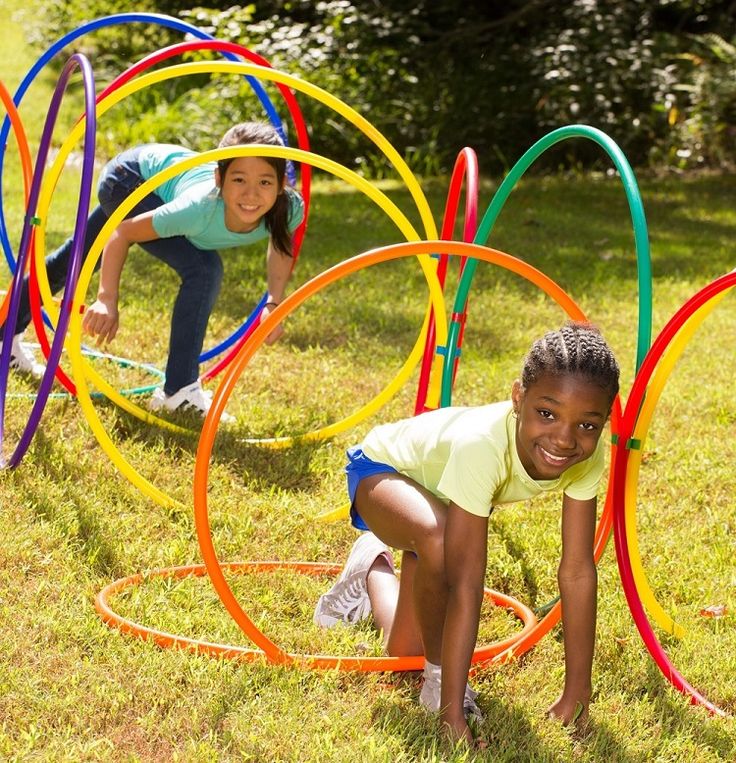 However, there was a time when blasphemy was forbidden. Among the laws prohibiting murder, robbery and other heinous acts was the prohibition of public blasphemy .
However, there was a time when blasphemy was forbidden. Among the laws prohibiting murder, robbery and other heinous acts was the prohibition of public blasphemy .
Hula was seen as a pagan practice in the eyes of Protestant missionaries.
When Queen Kaahumanu converted to Christianity, she proclaimed in 1830 along with a law encouraging her people to follow the Word of God, a ban on blasphemy in public places. Letters to local newspapers denounced the practice of hula.
In 1851, a law was passed requiring a license to speak in public. And a few years later, a license that cost $10 per performance only allowed hula performances in Honolulu and Lahaina, and not in any other public place.
But halau hula still worked, albeit in secret, on all the islands.
And only during the reign of David Kalakaua (at the very end of the 19th century) hula gained a second wind after 50 years of persecution. Thanks to his support and love for hula, hula again entered the mainstream of Hawaiian values openly distributed on the islands.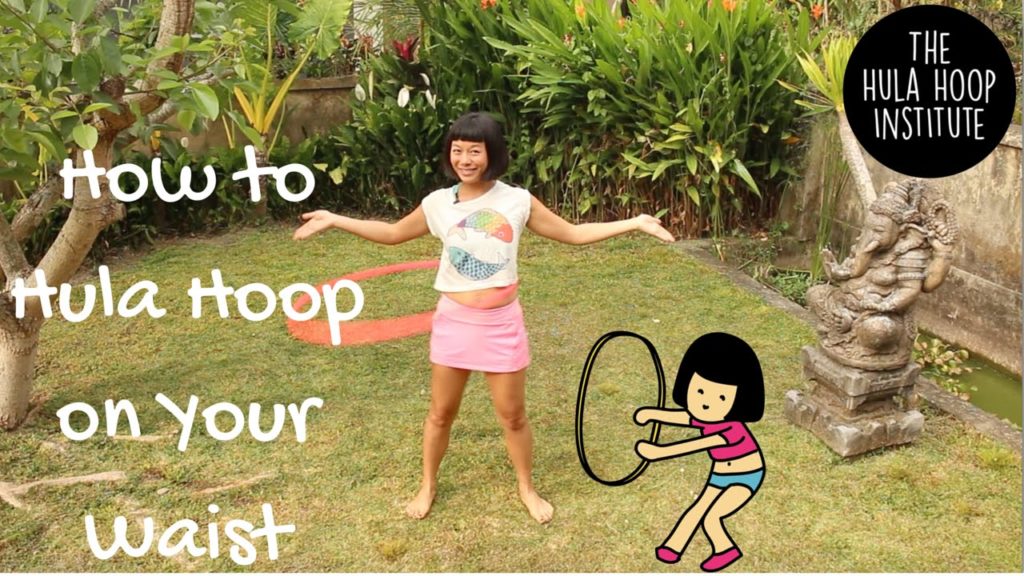 .
.
Festival The Merry Monarch in Hilo, Hawaii is named after him and is the most colorful annual hula event in the world.
Ha'ina'ia mai ana ka puana
Hula is the physical, visual expression of our stories and therefore our lives. The words and thoughts of our poets are enhanced by the dance.
Hula reflects the beauty of nature and radiates pride for our homeland.
And she still has high standards.
The halau hula has special rules and aspirations for its students.
Transfer of knowledge from kumu-hula to students.
Unity in body, mind and spirit of all dancers performing together.
The level of discipline required to study hula, in understanding what value is gained here.
Clarity, accuracy, completeness and perfection of each element of nature, and at the same time its refinement and tenderness - must be fully reproduced in hula.
There is life in blasphemy.
Our stories and language live through her.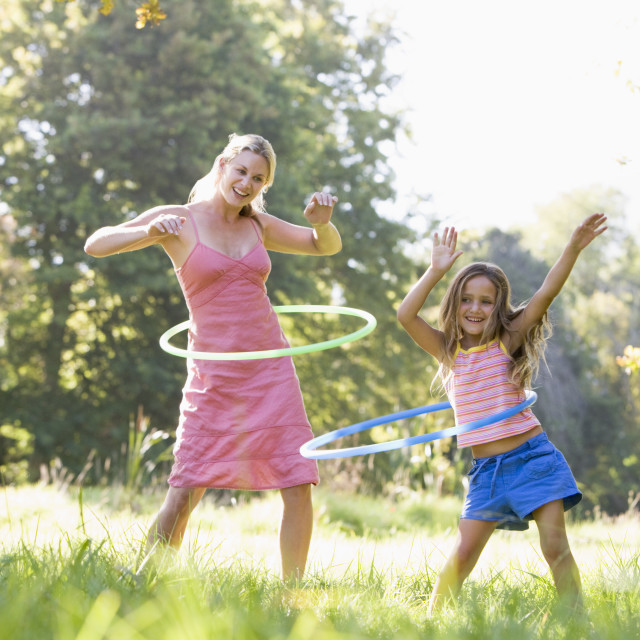
And as we dance our hula and chant our chants, our Hawaiian world comes alive, from our wisest ʻāina and kūpuna to our future generations.
Hula is the dance of life, and for some, hula is life itself. It is a way to live and interact with the world around us with reverence and aloha.
A great way to live.
Four Reasons to Dance Hawaiian Hula
- Photo
- Getty Images
1. Stop the internal dialogue
Due to the fact that almost all movements in the dance are illogical, uncoordinated, arms and legs move simultaneously, but at different speeds, the left hemisphere cannot cope with so many “requests” , lack of symmetry and logic. As a result, the work of the right and left hemispheres is harmonized. This process is healing in itself, but in addition, in Hula, every movement matters, every wave of the hand gives birth to a living image. It turns out a kind of meditation in motion - the Hula performer in the dance can talk about the beauty of the island, about the weather, about life on Earth, imitating the sun, sea, mountains, earth, trees, rain, rainbows, birds.
It turns out a kind of meditation in motion - the Hula performer in the dance can talk about the beauty of the island, about the weather, about life on Earth, imitating the sun, sea, mountains, earth, trees, rain, rainbows, birds.
2. Hula, a Polynesian antidepressant
Hawaiian poetry lacks the sadness inherent in our culture, celebrating life, singing the beauty of the island or telling a happy love story with every song. The task of the dancer is to tell it truthfully, even if the mood is not very good, it is winter outside and there has been no sun for more than a month! Dancing, it is impossible not to get involved in this game, so classes are fun, and a smile, without which Hula is not Hula, does its job, awakening the brain and body to joyful activity.
It turns out that Hula revitalizes us physically, emotionally and energetically, returns a state of pleasant excitement, gives aftertaste from the dance. Immersion in the bright and kind stories of Hawaiian songs, sometimes reminiscent of a fairy tale, heals, shifts attention and charges with joy, love and gratitude for oneself, for others, for nature, for the world.
3. Feeling the flow and developing femininity
All the movements of the Hula dance are very natural, they relax, slow down, ground, center and teach balance. By finding balance in movement physically, we also find emotional balance. Being grounded gives you contact with reality, your own impulses, and self-confidence. Centering brings us closer to contact with ourselves, a sense of integrity, we begin to hear ourselves, our feelings and experiences. By teaching our body the smooth and wide movements of the ancient Hawaiian dance, we change the stereotypes of movement, we begin to look at life around us in a new way. At some point, control weakens, the body begins to move by itself in the flow of dance, following the images, beautiful story and gentle music.
Hula is the easiest way to hear your femininity, to feel beauty, to bring it into the world. It fills us from the inside, gives us the strength and courage to show ourselves - to put on a beautiful dress, decorate our hair with flowers, smile dazzlingly and share our dance with others.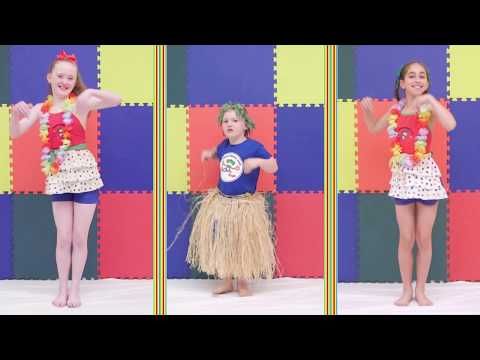 Perhaps with those who are looking for an opportunity to defeat the image of a woman-"comrade", inherited from several generations of the family.
Perhaps with those who are looking for an opportunity to defeat the image of a woman-"comrade", inherited from several generations of the family.
4. The art of self-expression
In our society, it is not customary to show emotions, we hide them deep inside, and over time, some of them turn into muscle clamps or hardened masks on our faces. Often we are not aware of how we feel. And since there are many stressful situations in life, and many of us do not know how to express emotions and relax, as a result we are in constant physical and emotional stress. It robs us of our strength.
Hula teaches you to understand yourself and express your emotions. “Whatever you feel, manifest,” the Hawaiians say. Playing feelings in the dance, we become softer, lighter and at the same time we are released from the old clamps. Each Hula dance is an expression of feelings through movements, where not the technique of movement is important, but emotions. Hawaiians say: if the dancer tells the story sincerely, then the eyes of the people who watch change - love enters them.